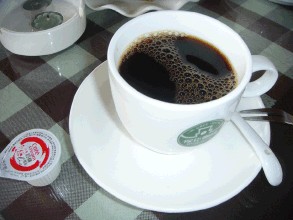Costa Rican Saint Roman Coffee Flavor description introduction to the characteristics of High-quality Coffee beans in producing areas
The Communist Party of Costa Rica was founded in 1931 (renamed the People's Vanguard Party in 1943). The party led the banana plantation workers 'strike in 1934.
From 1940 to 1948, the governments of R. A. Calderón Guardia and T. Picardo were intimidated by the People's Democratic Movement and adopted some democratic reform measures under the impetus of the People's Pioneer Party.
In the 1948 general election, the Social Democratic leader J. M. H. Figueres Ferrer waged a civil war, seized power, established a governing council (see Costa Rican Civil War), and the People's Vanguard Party was declared illegal.
In 1949 Figueres Ferrer handed over power to the elected leader of the National League, O. Urat Blanco.
In October 1951, Figueres Ferrer founded the National Liberation Party.
Of the six general elections held between 1953 and 1978, the National Liberation Party won four. During the party's administration, it emphasized state intervention in the economy, nationalized some industries, raised import taxes to protect national industries, forced the United Fruit Company to increase income taxes; strengthened relations with other Latin American countries and Western Europe, changed its dependence on the United States alone, joined the Central American Common Market in 1963, and established diplomatic relations with the Soviet Union and some countries in Eastern Europe in the 1970s.
In 1978, R. Carazo Odio, leader of the Solidarity Party, was elected president. In order to ease domestic contradictions, he adopted measures such as austerity spending and increased social welfare, while proposing to restrict state capital and encourage foreign and private investment.
In February 1982, L.A. Monge Alvarez, leader of the National Liberation Party, was elected president.
In February 2010, Chinchilla won the election and became the first female president in Costa Rica's history.
There are many kinds of coffee here, but its industrial policy is large and cheap, so there are not many excellent coffee, but it is a good choice to mix other coffees.
One of the most famous is Mountain Costa Coffee, which tastes mellow and neutral. It can be boiled directly or mixed with other kinds of coffee beans. It is also a good choice.
Other types of Brazilian coffee, such as Rio, Parana, etc., can be produced in large quantities without too much care. Although the taste is rough, it is a kind of inexpensive coffee. Due to its distribution in all parts of the country, the solid quality varies, and there are its own standards (NO.2~NO.8 according to the number of impurities, NO.13~NO.19 according to the size of beans, divided into six grades according to taste). Almost all Arabica varieties are of good quality and stable prices, the most famous being Costa Rica, which has been a necessity for blended coffee since ancient times and is familiar to the public.
Excellent Costa Rican coffee is known as "extra hard beans" and can grow at altitudes above 1500 meters. Altitude has always been a problem for coffee growers. The higher the altitude, the better the beans, not only because higher altitudes increase the acidity of the beans and thus enhance the flavor, but also because the lower night temperatures at higher altitudes can slow down the growth of trees and thus enhance the flavor of the beans. In addition, due to the high altitude drop caused by sufficient rainfall, coffee tree growth is very favorable.
Costa Rican coffee is all Arabica beans, washed, it is bright style, full of aroma, clear as wind chimes in the breeze, and mild acid, sweet quite good. Because of the sweet taste, even if the coffee is cold, it is also very good to drink, which is a major feature of Costa Rica coffee. Therefore, it is recommended that you taste Costa Rican coffee with only a small amount of sugar and creamer in order to enjoy its girlish pure flavor.

Important Notice :
前街咖啡 FrontStreet Coffee has moved to new addredd:
FrontStreet Coffee Address: 315,Donghua East Road,GuangZhou
Tel:020 38364473
- Prev

Guatemala Antigua Coffee Flavor description introduction to the treatment of varieties in producing areas
Guatemala is located in the tropics, the northern and eastern coastal plains have a tropical rain forest climate, the southern mountains have a subtropical climate, the year is divided into two dry and wet seasons, with the wet season from May to October and the dry season from November to April of the following year. The narrow and fertile flatlands on the Pacific side of Guatemala have a tropical climate. The central plateau is also the cultural center of Guatemala, where the year-round temperature ranges from 1300 to 1800 meters.
- Next

Description of El Salvador Himalayan Coffee Flavor with long-lasting Rhyme introduction to the characteristics of Grinding degree in producing areas
The Republic of El Salvador, located in the north of Central America, is the most populous country in Central America. The country is bordered by Honduras to the north, the Pacific Ocean to the south and Guatemala to the northwest. The national economy is dominated by agriculture, and the main crops are coffee and cotton. El Salvador is also one of the birthplaces of ancient Mayan culture, with not only distant culture, but also volcanoes, plateau lakes and Pacific coast.
Related
- Detailed explanation of Jadeite planting Land in Panamanian Jadeite Manor introduction to the grading system of Jadeite competitive bidding, Red bid, Green bid and Rose Summer
- Story of Coffee planting in Brenka region of Costa Rica Stonehenge Manor anaerobic heavy honey treatment of flavor mouth
- What's on the barrel of Blue Mountain Coffee beans?
- Can American coffee also pull flowers? How to use hot American style to pull out a good-looking pattern?
- Can you make a cold extract with coffee beans? What is the right proportion for cold-extracted coffee formula?
- Indonesian PWN Gold Mandrine Coffee Origin Features Flavor How to Chong? Mandolin coffee is American.
- A brief introduction to the flavor characteristics of Brazilian yellow bourbon coffee beans
- What is the effect of different water quality on the flavor of cold-extracted coffee? What kind of water is best for brewing coffee?
- Why do you think of Rose Summer whenever you mention Panamanian coffee?
- Introduction to the characteristics of authentic blue mountain coffee bean producing areas? What is the CIB Coffee Authority in Jamaica?

